Animals for chemical research
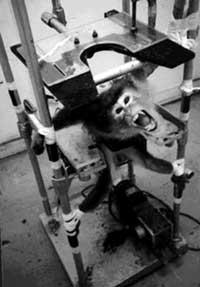
According to representatives of animal protection associations, the chemical issues that are now being addressed are being used for a long time, so, in theory, there should be a lot of data on these issues. We should already know which substances are dangerous, which are toxic, which cannot be washed with water, which are able to penetrate the tissues of the body, etc.
According to experts, if the European regulations on chemicals are not modified, 10 million animals will be killed in laboratories in the next 20 years. However, the European Union has not yet fully defined the test protocol to be carried out, so it cannot be said how these tests will be. However, after the usual toxicity tests, they will not be very different.
Due to the characteristics of the chemicals, the toxicity tests performed are also very varied.
The degree of toxicity of chemicals is measured by extreme toxicity tests. These tests are intended to assess the ability to cause damage to chemicals, produce disease or cause death. For this, the animal is subjected to a chemical exposure that can be brief, but direct or in important quantities. Sometimes the animal is swallowed with tubes or syringes or mixed with food. In these cases, the animals suffer convulsions, severe gut pains, epileptic seizures, bleeding… and death. In addition to ingesting chemicals, animals are breathed through vapors or breathing devices at the end. Nosebleeds, breathing problems, seizures, coma, and death are not surprising. Finally, the absorption capacity of the skin is measured by skin tests. Animals are removed from their hair and then chemical matter is applied. Scientifically, the value of extreme toxicity testing is very low.
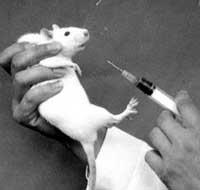
Repeated dose toxicity tests with animals are also performed. That is, chemicals are applied to animals, but in small doses and several times. These tests have a minimum duration of two weeks, but depending on the toxicity of the subject can be up to three months. The objective of these tests is to know the effect they have on the internal organs (liver, kidney, lung...) by administering chemicals at low doses. In addition to causing obvious physical damage, this type of toxicity test causes a state of stress in animals, for example, because, despite not wanting, it forces them to eat food.
Other tests for the study of the toxicity of chemicals aim to investigate the possible incidence of them in reproduction, both in fertility and in reproductive devices. In tests that can last between a month and three months, it is analyzed whether or not the use of chemicals produces alterations in the sexual habits of animals, whether it influences the formation of sperm or eggs, if a change occurs in the uterus, in newborns… At the end of the test period, often the reproductive devices of animals are amputated to see how they have been affected by chemicals.
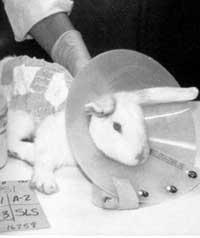
Finally, within the usual toxicity tests, those studying growth are also ordinary. They are therefore done with newborns and sometimes with toxicity tests that explore fertility. The goal is to see how chemicals affect certain growing areas. Form abnormalities, abortions as abnormalities grow, etc.
In addition to these general toxicity tests, others are carried out that have a more specific objective: to study the influence of chemicals on the eyes, to see their possible influence on the nervous system, to measure their carcinogenic capacity, etc.
Although the European Union has not determined how the tests will be, animal protection associations believe that short, medium and long term toxicity tests will be conducted, and mice, guinea pigs, rabbits, birds, fish and dogs will be used. If the opinion of these groups becomes reality, the future of many animals will be a future full of extreme gravity and pain.
Why against toxicity tests?
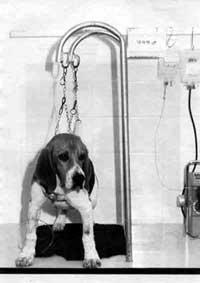
"Despite the use of all animals that exist in the world, it is absolutely impossible for chemicals to reach reasoned conclusions about the risks they may have for human health as we manipulate them today." According to scientist Joshua Lederberg, a man who won the Nobel Prize in 1958.
No wonder, as one of the main debates on toxicity testing is the need or not for them. There are many doubts about the suitability of these tests. That is, since animals and humans are so different, the results of toxicity tests are not significant for humans. Animal and human anatomy are not the same, neither physiology, nor biochemical responses and animal metabolism. The data obtained from the research highlights these differences:
- Toxicity tests of about 50 chemicals have recently been conducted to check how they affect fertility and the reproductive system. The data obtained approached 65% of what could happen in humans. The same tests were performed using human cells, with a degree of accuracy of 84%.
- Rodents are not able to make vomiting. Because they do not know how to expel the poison that enters the body, chemicals spend a lot of time inside. Therefore, extrapolation to human beings will hardly serve anything.
- The life of rodents is short, like that of mice, 2-3 years, while that of humans is much longer. Therefore, the long-term effects of chemicals cannot be measured.
- In addition to the differences between species, subspecies also stand out. In these cases it has been observed that the same chemical has not produced the same effects or between subspecies.
- Finally, statistics indicate that several animal tests have not given the same response in humans.
Proposals for completion of toxicity testing
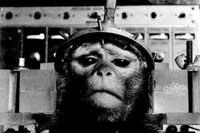
For animal toxicity testing to conclude, the European Union should modify its programme with chemicals. It is essential to find reliable alternative systems. It seems that this road is well open, but meanwhile, those who defend animal rights have made the following proposals:
- That all companies and countries know the data obtained from the tests so that the available data are used and the number of tests is not doubled. Many chemical companies in the world have a lot of data about their products on the market; if they were public, it would not be necessary to carry out so many tests.
- Postpone the testing program for three years so there is time to show that alternative methods are good.
- Coordination of international testing programs for alternative systems to prevent repetition of testing processes.
- The aim is to conduct rapid research without the use of animals.
- Identify the most toxic chemicals.
- Permission to use with care those who after rapid investigations without animals are considered to be of low toxicity or non-toxicity until investigations are completed.
- Restrict or prohibit the use and production of chemicals already considered toxic.
Associations and campaigns for animals
www.redalternativa.com/noalmaltratoanimal.htm
www.redalternativa.com/noalmaltratoanimal.htm
www.redalternativa.com/nomateisalaspalomas.htm
www.redalternativa.com/perrosygatosdecorea.htm
www.redalternativa.com/nohableconella.htm
http://www.upeu.org//www.stostostosto.com
Alternatives to toxicity testing
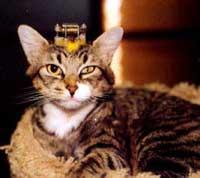
Although the toxicity tests of chemicals are carried out mainly with animals, animal protection associations consider that there are alternatives for their realization, that is, without the use of animals.
To replace extreme toxicity tests with animals, they propose testing with human cells. These are in vitro tests with cells of different organs and tissues. In fact, the toxicity of chemicals occurs basically at the cellular level. It is also considering working with cells to measure the absorption capacity of the skin. The cells would leave the corpses and then, as in the previous case, work in vitro.
In terms of skin corrosion analysis, there are already approved systems, TER, EPISKIN and CORROSITEX tests, all of them in vitro. Proposals for repeated dose toxicity testing are very similar, in vitro studies are generally recommended. For example, cell culture of the human liver can be subjected to small doses of chemicals, such as the kidney and other organs or systems. The results that come from each of these crops can be obtained by computer and develop mathematical models for extrapolation.
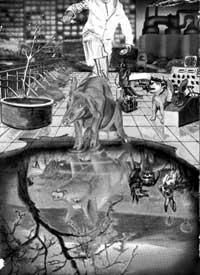
Alternatives for all other toxicity tests go the same way, i.e. human cell cultures or laboratory embryos, first, after testing, and finally, data collection and computer modeling.
Therefore, the possibility of substituting tests with animals is observed. However, today they are not replaced and, if they do not bear the pressure of society, it seems that then they will hardly be replaced.
Why? People working in animal protection associations say that scientists find it difficult to change, because they know and understand the systems they now use, and that the value of those proposed is not fully demonstrated; on the other hand, there is legislation, since any alternative pathway, if it has a future, should appear in an official test regulation. And, of course, the path of legislation is very slow.
Animal rights.
(created in 1977 and later approved by UNESCO and the UN)
- Article 4. All
animals have the right to life. - Article 4.
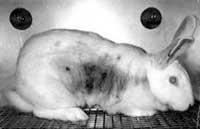
All animals have the right to be respected. Human beings, as animals, have no right to kill other animals or exploit them in violation of this right. Human knowledge must be put at the service of animals. All animals have the right to human protection. - Article 4.
Animals will not be subjected to ill-treatment or abuse. If the sacrifice of the animal is necessary, it will be done instantly and without pain or anguish. - Article 4.
Every wild animal has the right to live and reproduce in its natural environment. The denial of freedom, despite its educational purpose, goes against this right. - Article 4. Animals
that inhabit the human environment have the right to live and grow with the rhythm and customs of their species. Changing the pace and habits of life of animals through commercial objectives is contrary to this right. - Article 4.
Every animal that has been selected as an animal of help by man is entitled to its inherent longevity. The abandonment of animals is a cruel and curious act. - Article 4.
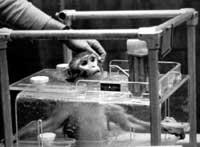
Working animals are entitled to limited work in time and intensity, adequate food and rest. - Article 4. Research that
causes physical and psychological pain, whether medical, scientific, commercial, etc., is incompatible with animal rights. Use and development of alternative techniques. - Article 4.
When the animal grows for food, it is necessary to grow, transport and die without anxiety or pain. - Article 4.
Animals cannot be exploited to entertain humans. Animal displays and animal shows are incompatible with the dignity of the animal. - Article 4.
Without necessity, if animals die they are crimes against life. - Article 4.
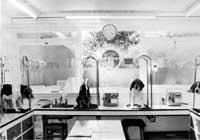
Any action involving the death of many wild animals is genocide, that is, crime against the species. Pollution and environmental deterioration lead to genocide. - Article 4.
Dead animals must be treated with respect. Images of violence against animals seen on television and in the cinema should be banned as long as they are not intended to be displayed against them. - Article 4. Animal
support and protection institutions must be represented in governments. The law must equally defend the rights of animals and humans.
Published in D2 section of Deia.
Buletina
Bidali zure helbide elektronikoa eta jaso asteroko buletina zure sarrera-ontzian











